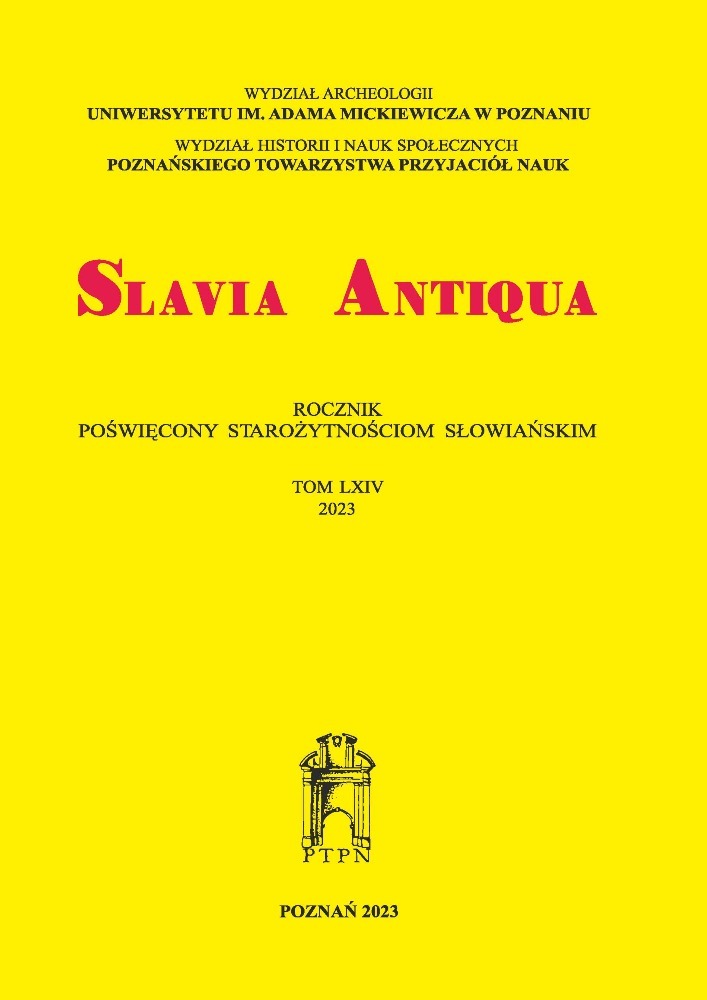ŚLĄSK W X WIEKU: ŹLE POSTAWIONE ZAGADNIENIE
SILESIA IN THE 10TH CENTURY: A MISPLACED QUESTION
Author(s): Borys PaszkiewiczSubject(s): Archaeology, 6th to 12th Centuries
Published by: Uniwersytet Adama Mickiewicza
Keywords: hacksilver; silver hoards; Wrocław; Niemcza; łozina; Gilów; the Piasts; the Přemyslids; Milceni; Zlasane; Trebouane; Pobarane; Dedosize; Chrouati; Viking Age;
Summary/Abstract: Researchers of the Polish past often discuss Silesia in the tenth century but the entity later referred to by this name did not exist at that time while its individual parts had different runs of history. The first evidence of establishing contacts between the middle Oder basin and the Mediterranean world after the Migration Period are three Arabic coins from 770-776, bereft of notches, graffiti or other traces of circulation, found on Trzebnica Ridge (Figures 1-3). Unlike the wave of Arabic silver coinage a quar- ter of a century later, these coins arrived not via the ‘Northern Arch’ but from the south, via Venice. They probably mark the attempts of slavers to penetrate the Oder basin. After 950, the route from Bohemia to the mouth of the Oder river was established, leading alongside the Neisse and the Oder but it was soon disrupted by the expansion of the Milceni to the east. Behind the Milceni, however, was the power of the East Frankish Kingdom, so the Přemyslids expanded to the north-east to bypass the Neisse. The Přemyslid expansion consisted in collecting tributes from the tribes occupying the left bank of the Oder River: Zlasane, Trebouane, Pobarane and Dedosize – and in establishing permanent military outposts in Niemcza and Wrocław. The result of including the local dwellers in the trade and tributary network was the concentration of power in the tribes and the spread of silver hoarding. After the alliance between the Boleslavs of Prague and Mieszko I of Gniezno was established in c. 964, both states met on the middle Oder line and co-operated within the great trade corridor connecting Central Asia, Scandinavia and Western Europe. Political destabilization in Germany after 983 enabled Mieszko to break off the alliance, cross the Oder to the west and spread his influence along the Kaczawa to Milceni and Meissen lands, and then in 990 to drive the Czechs out of the area between Wrocław and the Sudetes. In this way, a route from Mayence to Kyïv was created, bypassing Prague, cut off the city from contacts with the mouth of the Oder River, which led to the crisis of the Czech state.
Journal: Slavia Antiqua. Rocznik poświęcony starożytnościom słowiańskim
- Issue Year: 64/2023
- Issue No: 1
- Page Range: 77-131
- Page Count: 55
- Language: Polish

